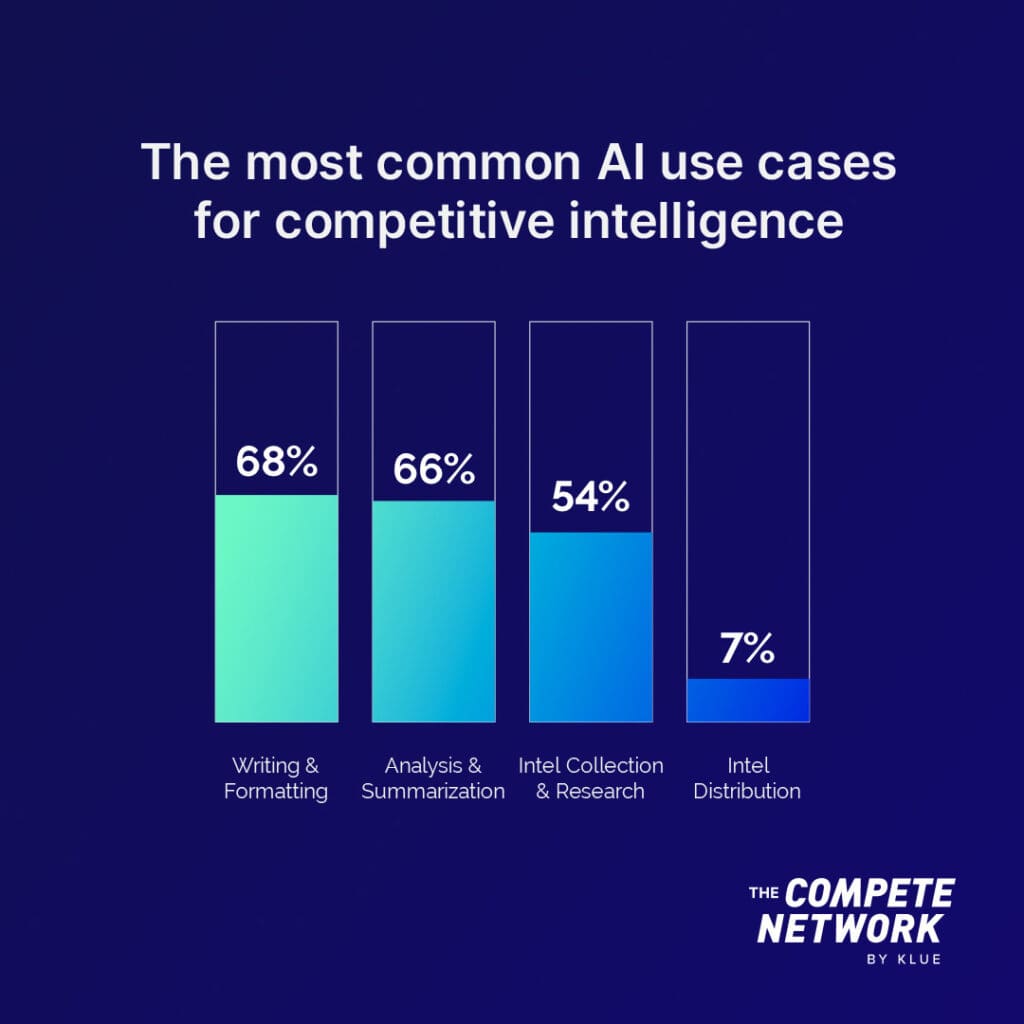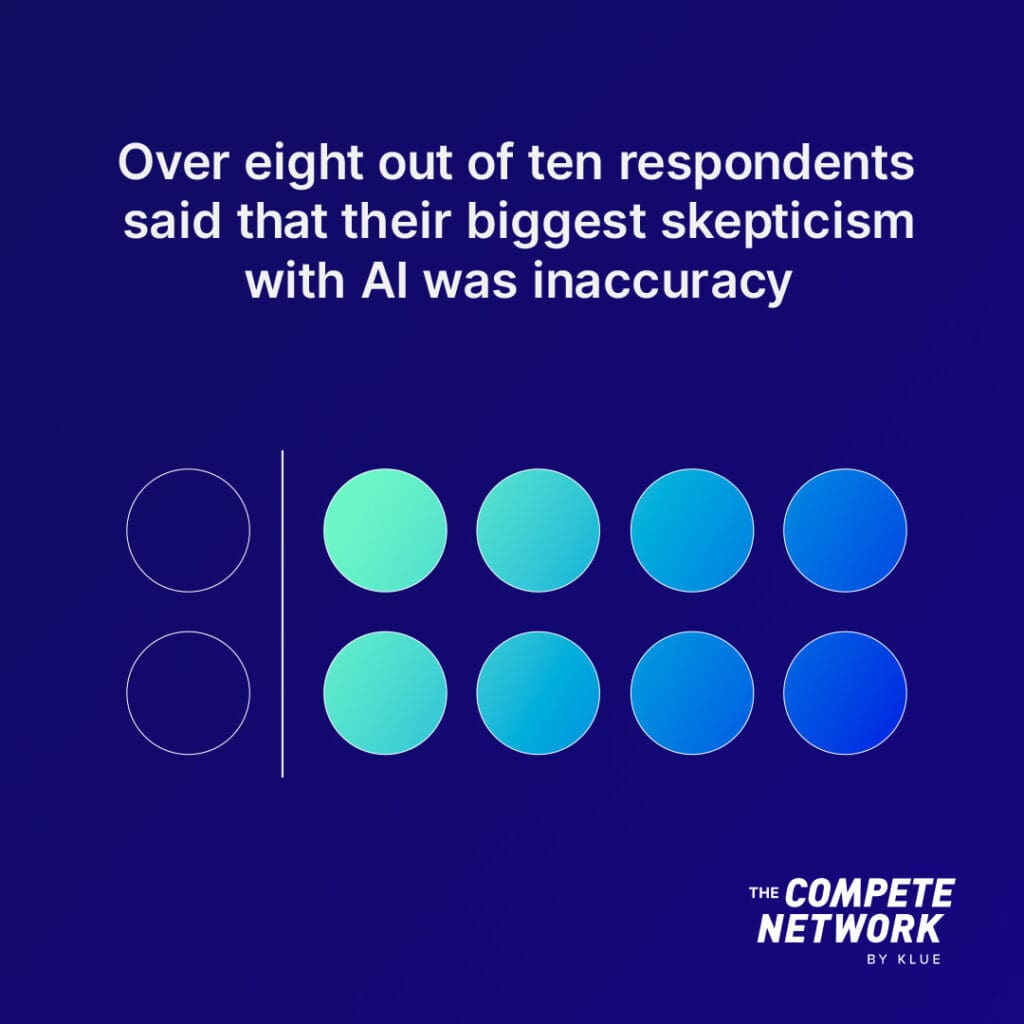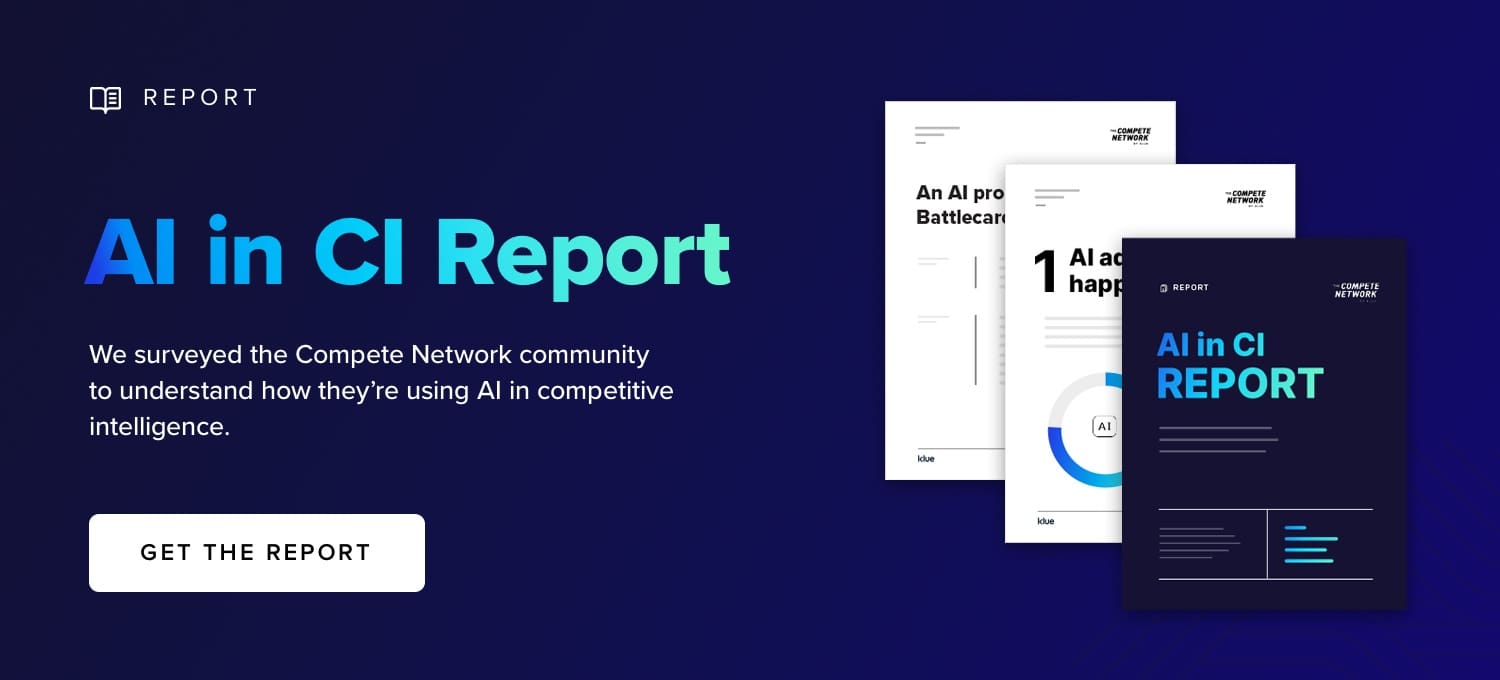Klue Compete
The Competitive Enablement Platform
Learn More
FIND OUT MORE >

AI is the new kid on the block.
And the competitive intelligence industry is figuring out the best ways to work — and not work — with this technology in their roles.
So, we surveyed our Compete Network community for our AI in Competitive Intelligence Report to understand how they’re using AI in competitive intelligence today, and where they predict it will go in the future.
Brandon Bedford, Competitive Enablement Manager at Klue, and James Raffield then dove into three of the biggest takeaways from the research in our community AMA. Here’s what they had to say.
(If you want to tune in to the full conversation watch the video below, or check out the latest episode of The Competitive Enablement Show on the Compete Network.)
Product marketers are looking for efficiencies across every ‘job to be done’ in competitive intelligence. But two areas stood out in particular: formatting and analysis.


For example, James shared that he uses AI to speed up his time-to-analysis, like summarizing win-loss analysis, which once took days. He also automated the process of gathering reviews and analyst reports like G2, Forrester, and Gartner.
This allowed him to get to the meat quickly, focusing on ‘why they win, and why they lose’.
“I use AI to help me condense and be more concise with my material. Then deliver the right message to the right persona,” said James Raffield.
“I use AI to help me condense and be more concise with my material. Then deliver the right message to the right persona.”
— James Raffield
But analysis is useless if it isn’t actionable for stakeholders.
And that’s where Brandon has focused on his work with AI — specifically with reformatting and tailoring competitive content for different internal stakeholders.
This nuance in tweaking how you deliver competitive intel is the difference between a rep ignoring it or using it perfectly to help close a deal.
Because an enterprise rep, a rep in EMEA, and an enterprise rep in EMEA, may all need slightly different contexts.
The biggest skepticism the competitive intelligence community had when working with AI (by far!) was accuracy risks.


Accuracy and trust is your reputation in competitive intelligence.
One wrong statement on a competitor that gets used — and disproven — on a sales call?
Good luck with winning back that seller.
And this was a limitation that both James and Brandon discovered when working with open LLMs like ChatGPT.
“It can’t go out and do anything… It only has data up to a certain point in time,” said James.
Not all data is made equal. You cannot expect ChatGPT to providing real answers on your competitors from purely scraping the public web. It will struggle to differentiate when pulling press releases, marketing ‘spin’, and everything in between.
That’s why both Brandon and James highlighted how important proprietary data is when working with AI. Insights that are gathered from win-loss interviews or call transcripts, then safely analyzed with closed-source LLMs.
This is the good stuff that lessens the risk of inaccuracy.
And it isn’t just access to data; how we communicate with ChatGPT can lead to spurious answers. We’ve all seen ‘hallucinations’ by now, which are often caused by slight misinterpretations of prompts.
(Check out the full AI in Competitive Intelligence Report below)


Under 10% of respondents said they were concerned with AI replacing their role.
A human-in-the-loop is needed to verify the insights created.
In Brandon’s case, when using Klue he views it as a museum and that every piece of intel that makes it there for stakeholders to view has to be vetted by him.
“I am approving what goes into the museum… I have to be responsible.
That last layer of trust and verification will always have to be done by a human,” said Brandon.
That last layer of trust and verification will always have to be done by a human”
— Brandon Bedford
AI is new around here. We get it.
But the competitive intelligence teams that crack how to work with it (responsibly!) will separate themselves from those repeating the same manual processes.
If you haven’t checked our AI in Competitive Intelligence Report, there’s plenty more data and comments from the Compete Network community.




Competitive Enablement
The topic of Large Language Models (LLMs) has a lot of confusion. Here's what you need to know about how Klue is working with them.


Competitive Enablement
Product Marketing
If your competitive intel game is too strong for automation, too pure for data privacy, and too rebellious for accuracy — then Klue AI is probably not for you.


Let’s do it. Tell us a bit about yourself and we’ll set up a time to wow you.
Let's do it. Tell us a bit about yourself and we'll set up a time to wow you.
XLet's do it. Tell us a bit about yourself and we'll set up a time to wow you.
XSubscribe to get our latest AI functionality and news in your inbox.
XOur Buyer Pulse feature, set to launch in Q2 2024, offers valuable insights into the factors influencing buyer decisions in your pipeline. By signing up for the waitlist, we can better gauge interest and proactively engage with you to streamline the setup and integration process before the feature becomes widely available.
X